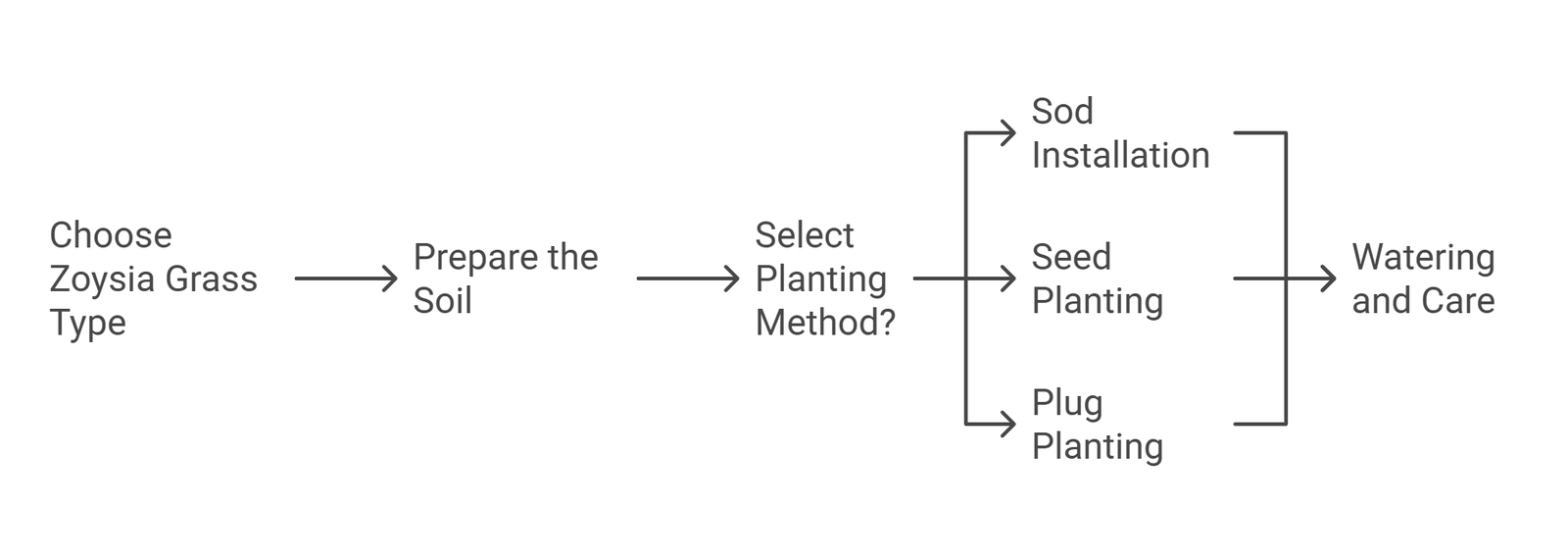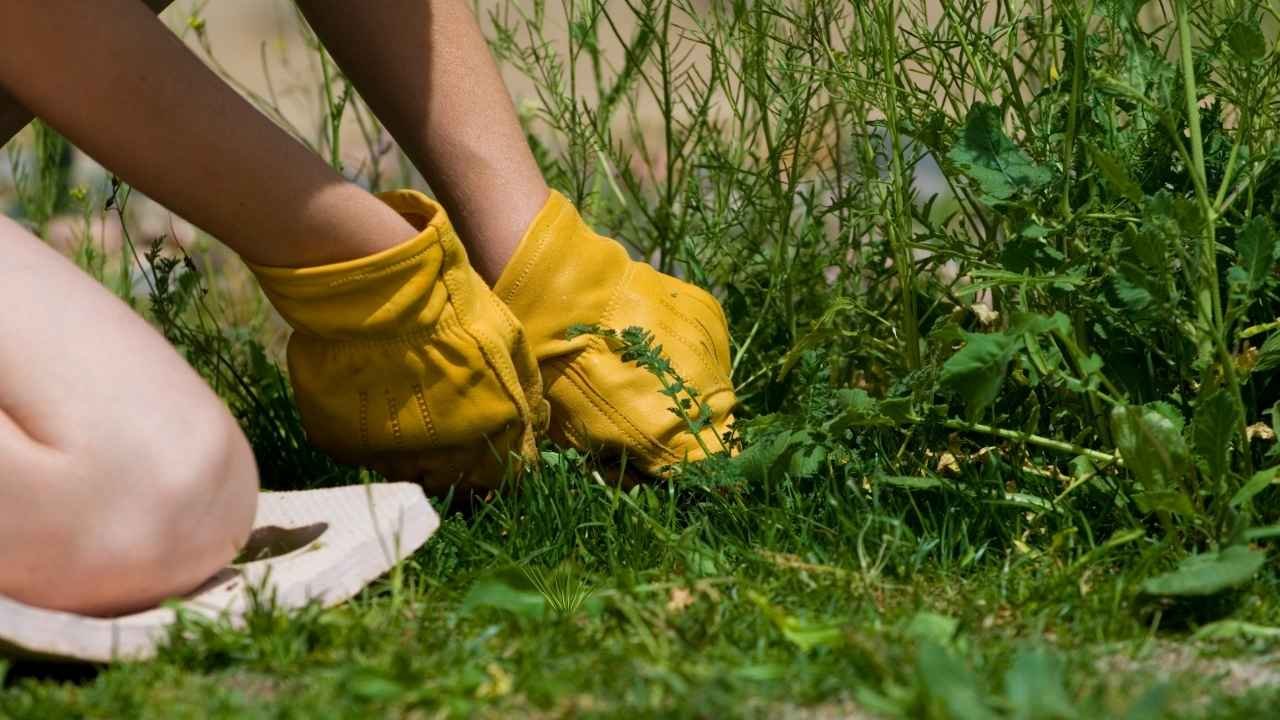If you’re aiming for a healthy, thick lawn that can handle heat and foot traffic, Zoysia grass could be the right choice for your yard. Known for its dense, carpet-like texture and tolerance to dry conditions, this warm-season grass is a popular option for creating a beautiful, easy-to-care-for lawn. However, timing is key when it comes to planting Zoysia grass. This guide will look at the best time to plant Zoysia grass, how to care for it, and tips to help it thrive.
Why Timing Matters for Zoysia Grass
Planting Zoysia grass at the right time makes a big difference in how well it grows. Plant it too early or too late, and you risk poor development, disease, or stunted growth. By understanding the grass’s needs and the right climate conditions, you can give your Zoysia grass the best possible start.
What is Zoysia Grass?
Before we dive into the best planting times, it’s essential to understand what Zoysia grass is all about. Zoysia is a warm-season grass which grows best during the warmer months. It thrives when the temperature is consistently between 70°F and 95°F (21°C to 35°C). Zoysia is known for its:
- It has a dense, soft texture that feels nice to walk on.
- Drought resistance makes it an excellent option for those looking to conserve water.
- Resistance to weeds, reducing the need for chemical treatments.
- Low maintenance once established, as it doesn’t need mowing or fertilizing as frequently as other grass types.
However, Zoysia grass grows slowly, so it requires patience when planting.
When is the Best Time to Plant Zoysia Grass?
The best time to plant Zoysia grass is late spring or early summer. Here’s why:
1.Optimal Soil Temperature
For a lush and vibrant lawn, zoysia grass thrives when the soil temperature hovers between 65°F and 70°F (18°C to 21°C). This is the ideal condition for optimal growth, so ensure your garden is cozy enough for this beautiful grass to flourish! The soil must be warm enough to help the seeds sprout but not too hot, as that could harm the young grass. Soil temperatures typically hit this sweet spot from late spring to early summer.
2.Ideal Air Temperature
Zoysia grass needs warm air to grow effectively. For strong growth, the air temperature should ideally be between 70°F and 95°F (21°C to 35°C). Planting in late spring ensures the grass has enough time to establish itself before cooler weather arrives.
3.Avoiding Frost
Frost can damage young Zoysia grass. It’s advisable to hold off until the chill of frost has finally departed! Depending on where you live, this usually happens toward the end of spring. Planting after the last frost date helps ensure that a sudden drop in temperature won’t harm your grass.
4.Maximizing the Growing Season
Zoysia grass grows slowly and needs an entire growing season to establish its roots. Planting in late spring or early summer gives the grass plenty of time to grow and spread before the weather cools down.
Best Conditions for Planting Zoysia Grass
| Condition | Ideal Range | Explanation |
|---|---|---|
| Soil Temperature | 65°F – 70°F (18°C – 21°C) | Zoysia grass needs warm soil to germinate, but not too hot. |
| Air Temperature | 70°F – 95°F (21°C – 35°C) | Warm air is necessary for healthy growth and establishment. |
| Frost Risk | No frost after planting | Frost can damage young Zoysia grass, so plant after the last frost date. |
| Sunlight | At least 4-6 hours of direct sunlight/day | Zoysia grass thrives best in full sun, but it can tolerate some shade. |
How to Plant Zoysia Grass: A Step-by-Step Guide

Now that you know when to plant Zoysia grass, let’s look at the steps for growing it successfully.
1.Choose the Right Type of Zoysia Grass
There are different types of Zoysia grass, including:
- Zoysia Japonica: Known for its cold tolerance and dark green color.
- Zoysia Matrella: A finer-textured variety, often used on golf courses or high-quality lawns.
- Zoysia Tenufolia: A soft, dense grass that is slower to establish but very tough once it does.
Choose the type that best suits your local climate and your preferences.
2.Prepare the Soil
Zoysia grass grows best in well-drained, slightly acidic soil (pH 6.0–6.5). Follow these steps:
- Remove old grass or weeds by mowing the area low and using a rake or hoe to clear the debris.
- Aerate the soil if it’s compacted, which allows air, water, and nutrients to reach the grassroots.
- Add compost or soil amendments to improve soil quality if necessary.
3.Planting Methods
You can plant Zoysia grass in several ways:
- Sod: The fastest option. Lay sod pieces in a staggered pattern to avoid visible seams. Water thoroughly after planting and keep the sod moist until it establishes.
- Seed: This is the most affordable option but also the slowest. Spread seeds evenly over the prepared soil and rake lightly to cover them. Keep the soil moist until the seeds begin to germinate.
- Plugs or Sprigs are small pieces of grass that grow and spread over time. This method works well for large areas and can be cost-effective in the long run.
4.Watering and Care
Water your grass regularly to keep it thriving. This will help maintain a pleasant, moist soil environment as it establishes itself. Your lawn will reward you with a stunning display of lush, vibrant blades! Zoysia grass is drought-tolerant once fully grown, but it requires consistent moisture to support root growth during the initial stages. Once established, you can reduce watering frequency.
How Long Does Zoysia Grass Take to Grow?
Zoysia grass is recognized for its slow growth rate, So it may take a few months to establish itself. Typically, Zoysia grass takes about 2-3 years to fill in and fully develop a thick, lush lawn. If you’re using sod or plugs, this process will be faster than if you’re starting from seed. Patience is key when growing Zoysia grass, but the results are worth the wait.
Common Challenges with Zoysia Grass and How to Overcome Them
1.Slow Growth
Zoysia grass grows slowly, which is frustrating for those looking for quick results. If speed is a priority, consider using sod instead of seed for faster establishment.
2.Weed Control
Although Zoysia grass is naturally resistant to weeds, it’s still vulnerable to them when it’s young. To reduce the risk of weeds, use a pre-emergent herbicide and avoid over-fertilizing, which can encourage weed growth.
3.Pests and Diseases
Zoysia grass is typically resistant to pests and diseases; however, it can still be affected by issues like grubs or fungal infections. Look at your lawn and treat any problems early with natural or eco-friendly products.
FAQs About Planting Zoysia Grass
1. Can I plant Zoysia grass in the fall?
Planting Zoysia grass in the fall is not recommended, as the cooler temperatures prevent proper growth. Planting in late spring or early summer is best.
2. How much sunlight does Zoysia grass need?
Zoysia grass grows best in full sunlight but can also handle some shade. Aim for at least 4-6 hours of direct sunlight per day for best results.
3. Can Zoysia grass grow in cooler climates?
Zoysia grass grows best in warm climates. However, some varieties (such as Zoysia Japonica) are more tolerant of cooler temperatures and can be grown in regions with mild winters.
4. How often should I water Zoysia grass?
Once established, Zoysia grass requires little water. In the early stages, water regularly to keep the soil moist, but as the grass matures, you can reduce watering.
Final Thoughts
Planting Zoysia grass at the right time is key to a thriving, healthy lawn. Choosing late spring or early summer, when the soil and air temperatures are just right, gives your Zoysia grass the best opportunity to thrive. With the proper care, patience, and attention, you’ll soon enjoy a beautiful, low-maintenance lawn that lasts for years.
Ready to start planting? For the best results, follow these tips and enjoy your Zoysia grass lawn!


